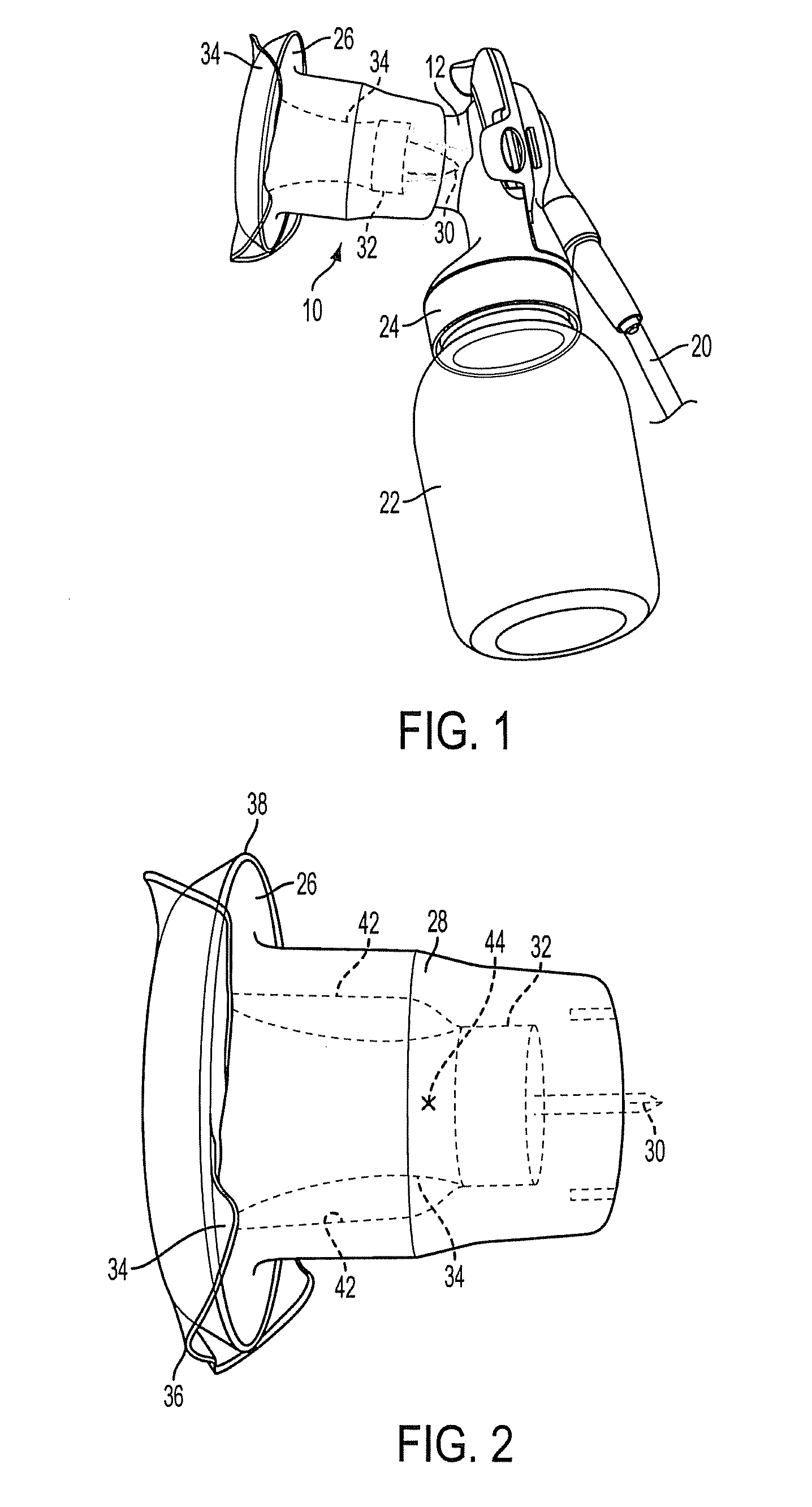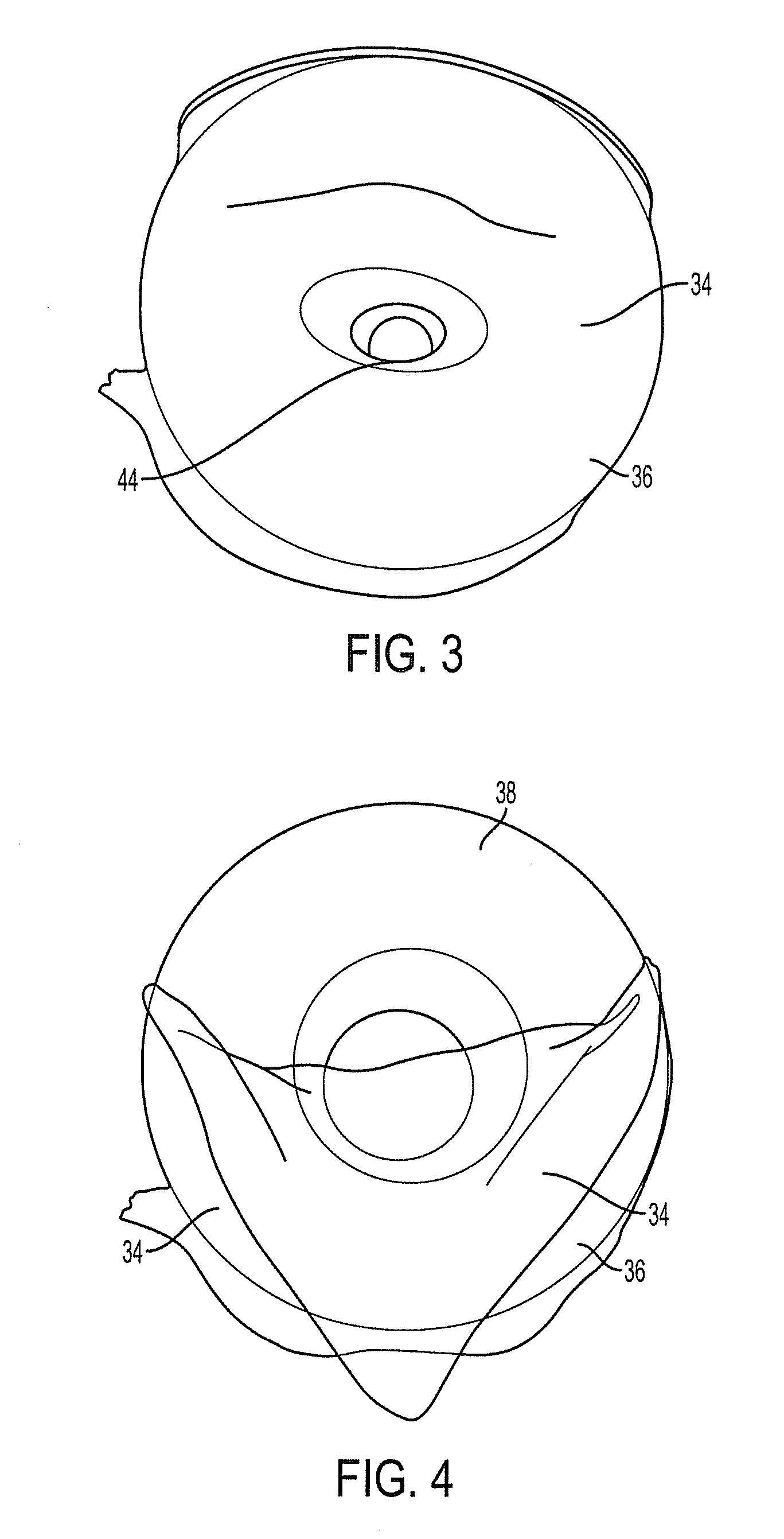Highly efficient breastpump and system for expressing breastmilk
a breastpump and high-efficiency technology, applied in the field of breastpump assembly for expressing mothersmilk, can solve the problems of affecting seriously questioning the “conventional wisdom” on how a baby is born, and the energy required to make the pump work, so as to reduce the size of the pump and eliminate air. , the effect of less energy
- Summary
- Abstract
- Description
- Claims
- Application Information
AI Technical Summary
Benefits of technology
Problems solved by technology
Method used
Image
Examples
Embodiment Construction
[0059]FIG. 1 depicts a first system for expressing breastmilk in accordance with the present invention. The system includes a breastshield 10 attached to a base 12. Base 12 is part of a breastpump assembly more particularly shown in US Patent Publication 2008 / 0171970, the disclosure of which is incorporated herein by reference. That assembly includes a vacuum pump which utilizes a barrier component (see FIG. 5) or diaphragm 14 that is enclosed in a clamshell-like chamber made of a front housing 18 and a rear housing 16. The barrier is reciprocated within the space of the housings 16, 18 by an intermittent vacuum from a vacuum source (not shown) which is connected via a tube 20 (see FIG. 1). Movement of the barrier downstream by the vacuum source conveys vacuum upstream by its movement (expanding the volume upstream).
[0060]Milk extracted in operation flows to a container 22 attached to a collar 24 which communicates with conduit structure within the breastshield assembly. Again, the ...
PUM
 Login to View More
Login to View More Abstract
Description
Claims
Application Information
 Login to View More
Login to View More - R&D
- Intellectual Property
- Life Sciences
- Materials
- Tech Scout
- Unparalleled Data Quality
- Higher Quality Content
- 60% Fewer Hallucinations
Browse by: Latest US Patents, China's latest patents, Technical Efficacy Thesaurus, Application Domain, Technology Topic, Popular Technical Reports.
© 2025 PatSnap. All rights reserved.Legal|Privacy policy|Modern Slavery Act Transparency Statement|Sitemap|About US| Contact US: help@patsnap.com



